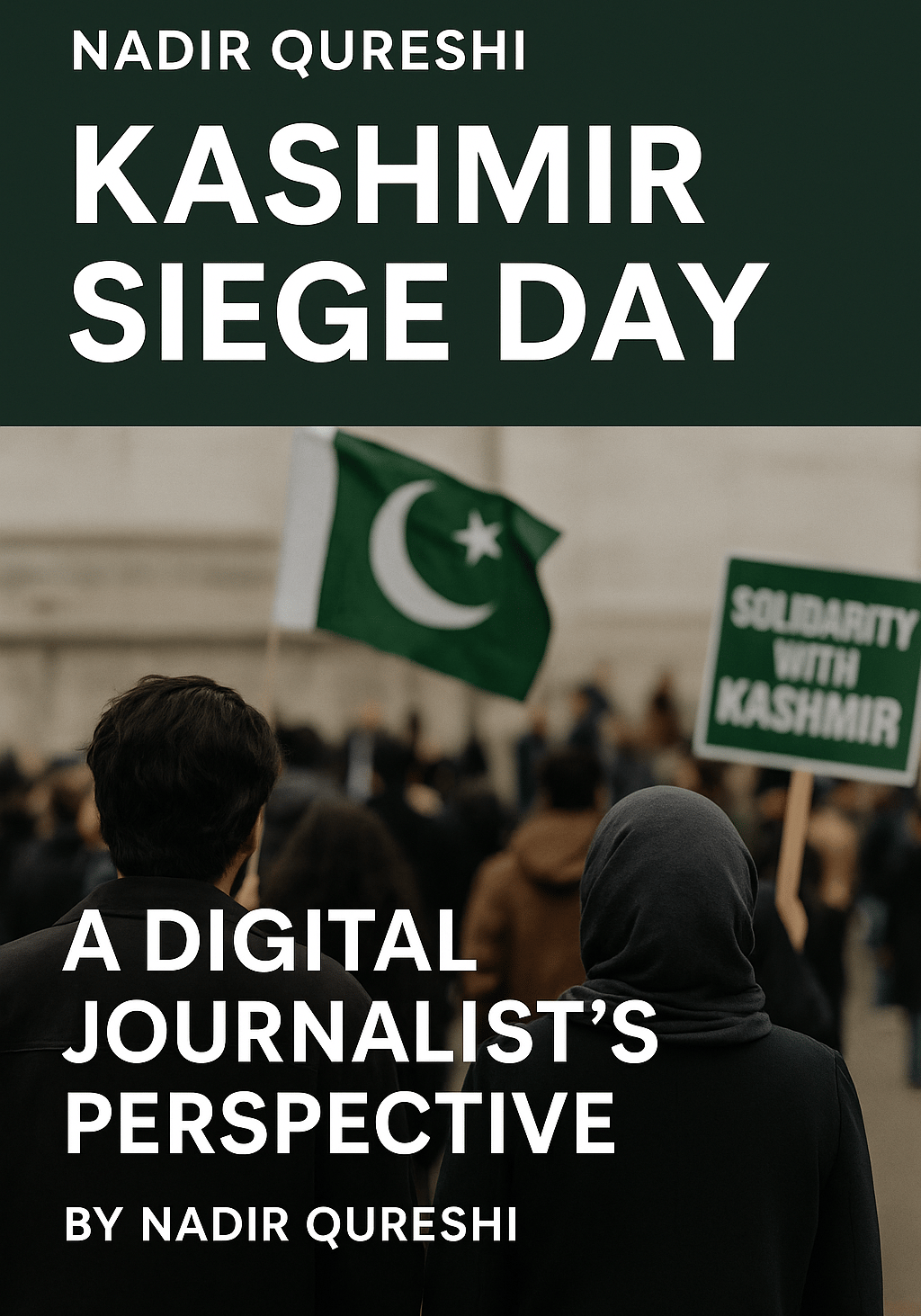Kashmir Siege Day: A Digital Journalist’s Perspective on India’s Human Rights Violations
Senior digital media strategist Nadir Qureshi highlights India’s ongoing human rights violations in occupied Kashmir, the role of global media, and Pakistan’s unwavering digital and diplomatic support for the Kashmiri cause.
Web Desk Nadir Qureshi
8/5/20252 min read


Kashmir Siege Day: A Digital Journalist’s Perspective
By Nadir Qureshi – Senior Digital Media Strategist & Digital Journalist
On August 5, 2019, the world witnessed a defining moment in South Asian history. India unilaterally revoked Article 370 and 35A, stripping Indian Illegally Occupied Jammu and Kashmir (IIOJK) of its special constitutional status, in clear violation of United Nations Security Council resolutions.
Since then, every year, Pakistan observes August 5 as “Youm-e-Istehsal” (Kashmir Siege Day) to remind the global community of the unending human rights violations inflicted upon the Kashmiri people.
As someone deeply engaged in digital journalism and narrative building, I see the Kashmir issue not only as a geopolitical crisis but also as a digital battlefield of narratives. While Indian state machinery attempts to suppress voices through curfews, communication blackouts, and media censorship, the truth of Kashmir continues to emerge through digital activism, independent journalists, and Pakistan’s consistent global outreach.
The Humanitarian Crisis: When Healthcare Becomes a Weapon
One of the most disturbing aspects of India’s occupation is the systematic denial of healthcare.
Hospitals in Srinagar and other districts face severe restrictions.
Life-saving medicines and surgical supplies remain scarce.
Medical staff are harassed, and emergency services are delayed.
Federal Health Minister Syed Mustafa Kamal recently highlighted this human tragedy, calling the shortage of medicines and hospital blockades a humanitarian disaster.
As a journalist, I see this as beyond politics—it’s a violation of the Geneva Conventions, where basic human rights and medical neutrality are blatantly ignored.
Digital Media: The New Frontline of the Kashmir Narrative
Traditional media alone is no longer enough to counter disinformation. Today, Twitter, TikTok, and independent blogs are powerful tools to expose the ground realities of Kashmir to the world.
From my perspective as a digital strategist, three key actions are vital:
Consistent Digital Storytelling:
Pakistan must produce verified visual and narrative content highlighting real stories of Kashmiri suffering and resilience.Global Hashtag Campaigns:
Trends like #StandWithKashmir or #YoumEIstehsal have repeatedly shown how digital pressure can trigger global coverage.Collaboration with International Media & Influencers:
Engaging foreign journalists, human rights activists, and global opinion leaders through digital outreach ensures that Kashmir remains in the global conversation.
Pakistan’s Role: Moral, Diplomatic, and Digital Commitment
Statements like “Kashmir will become Pakistan” from leaders such as Mustafa Kamal are not just slogans they represent a national commitment to moral and diplomatic support for the Kashmiri cause.
However, in today’s digital era, Pakistan must:
Strengthen its narrative online with credible stories and multimedia content.
Counter Indian disinformation with fact-based campaigns.
Use digital diplomacy to influence global policymakers.
Conclusion: Every Click, Every Post Counts
As a digital journalist, I believe every tweet, every blog, and every video that tells the truth of Kashmir is a form of resistance. The Kashmiri struggle is not only on the streets of Srinagar but also on the screens of the world.
August 5 is not just a date; it is a reminder of our duty to ensure that the sacrifices of Kashmiri people are never forgotten and that one day, freedom will prevail.
